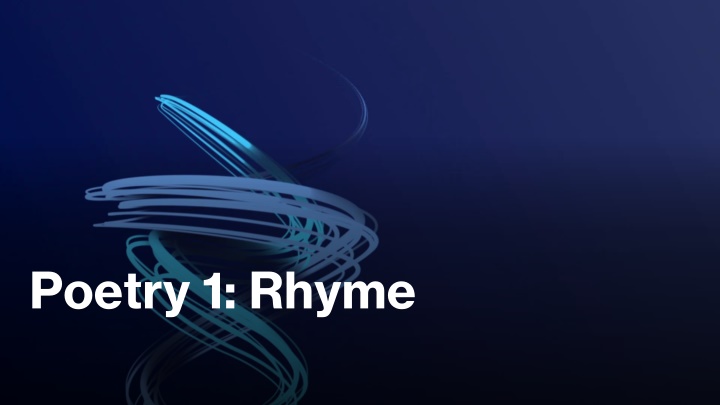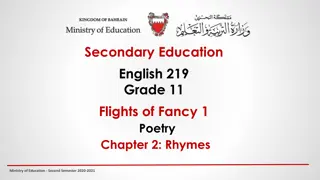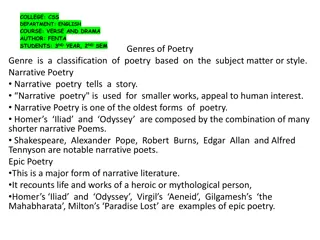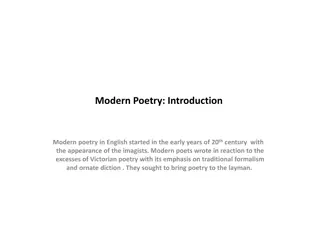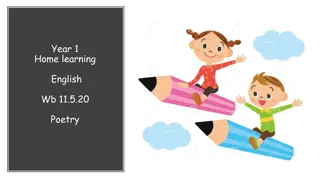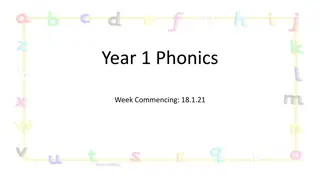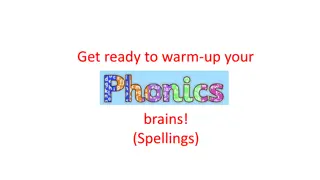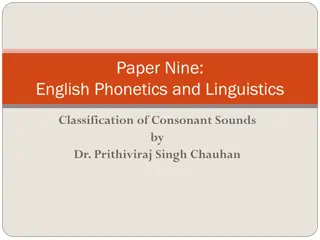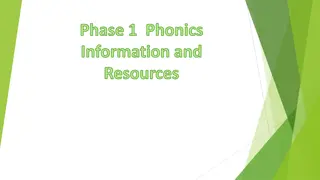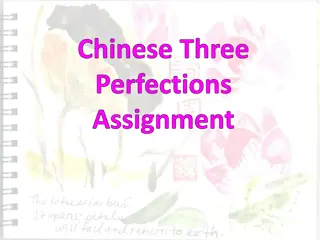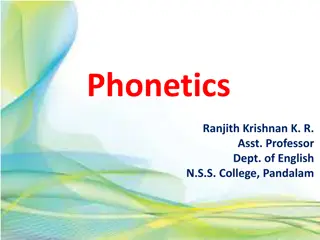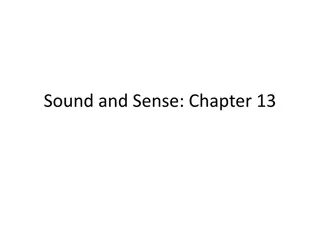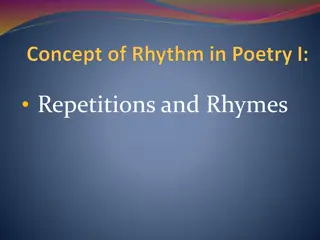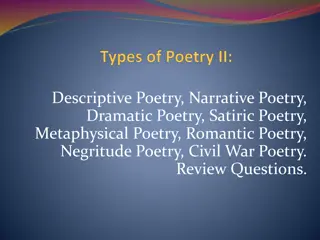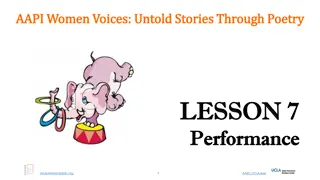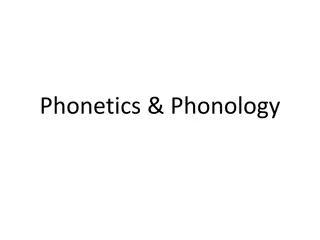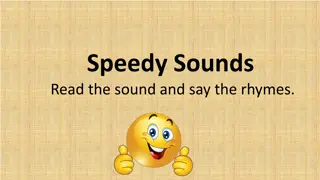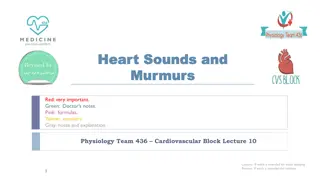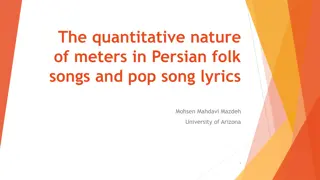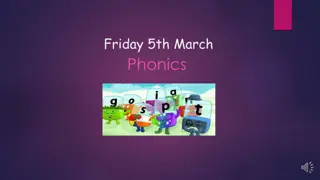Rhymes and Sounds in Poetry
Rhyme plays a crucial role in poetry, linking certain lines or words together to create a pleasing auditory experience. There are different types of rhymes like perfect and imperfect, alongside other sound devices such as alliteration, assonance, consonance, and onomatopoeia. Explore rhyme patterns like end rhyme, internal rhyme, and rhyme schemes to enhance your understanding of poetic elements.
Download Presentation

Please find below an Image/Link to download the presentation.
The content on the website is provided AS IS for your information and personal use only. It may not be sold, licensed, or shared on other websites without obtaining consent from the author.If you encounter any issues during the download, it is possible that the publisher has removed the file from their server.
You are allowed to download the files provided on this website for personal or commercial use, subject to the condition that they are used lawfully. All files are the property of their respective owners.
The content on the website is provided AS IS for your information and personal use only. It may not be sold, licensed, or shared on other websites without obtaining consent from the author.
E N D
Presentation Transcript
Why rhyme? LINKS CERTAIN LINES OR WORDS TOGETHER PLEASING TO HEAR WHEN READ ALOUD (SOUNDS GOOD) MAKES IT EASY TO REMEMBER
2 types of rhymes Perfect Rhyme A perfect rhyme is when two words have exactly the same sound, syllables & emphasis love, dove compare, despair plunder, thunder mournfully, scornfully
2 types of rhymes Imperfect Rhyme Also called: slant rhyme, half rhyme, near rhyme. Two words sound similar but not quite the same sparring, caring move, love lake, fate
Other sounds in poems Alliteration first letter the same (e.g. suddenly the silence stopped) Assonance Repeated vowel sounds (e.g. he s asleep beneath the tree) Consonance repeated consonant sound (e.g. sitting in the rain, pitter patter, getting wetter) Onomatopoeia Words that sound like what they do (e.g. pop, buzz, hiss)
Rhyme Patterns in Poems End Rhyme The most common type of rhyme used in poems The last syllable or word of the line rhymes Do not worry, do not fear I am a happy captive here
Rhyme Patterns in Poems Internal rhyme Two words rhyme within the same line The moon never beams without bringing me dreams Of the beautiful Annabel Lee And the stars never rise but I see the bright eyes Of the beautiful Annabel Lee
Rhyme Scheme Pattern of end rhymes in a poem, usually marked by letters: I wandered lonely as a cloud A That floats on high o'er vales and hills, B When all at once I saw a crowd, A A host, of golden daffodils; B Beside the lake, beneath the trees, C Fluttering and dancing in the breeze. C
